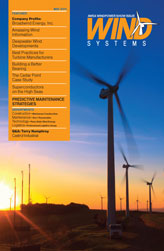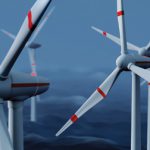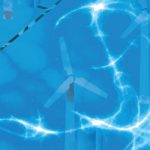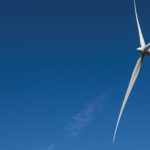In its nascent stages today, the offshore wind power market is expected to enter a period of rapid and prolonged growth beginning within the next several years. The development of higher capacity wind energy systems will be required to fully capitalize on this vast clean energy resource.
Total installed offshore wind power capacity rose to approximately 3 gigawatts (GW) by the end of 2010, according to latest reports by the European Wind Energy Association. That figure, which is up from approximately 2GW at the end of 2009, does not include the more than 32GW of offshore capacity currently planned, but not yet fully consented, in the United Kingdom. While there currently are no offshore wind farms in North America, several projects are in development in the United States. Reflecting the scope of the growth expected for this market, industry research firm IHS Emerging Energy Research currently projects that global offshore installed capacity will increase to approximately 20GW by 2015, and rise sharply to 104GW by 2025.
Until now, among the greatest challenges to developing larger wind turbines for both onshore and offshore use have been the practical size and weight limitations of the wind turbine generator. The power density advantage of superconductors, however, is now being applied to wind turbine generators to maximize the “power per tower” of multi-megawatt turbines, while at the same time overcoming size and weight barriers and reducing overall project costs. Utilizing superconductor direct-drive generators, SeaTitan™ wind turbines are being designed to produce 10MW or more of power, which would make them the world’s largest and most powerful wind turbines.
Offshore Superconductor Turbines
American Superconductor (AMSC) is developing the SeaTitan wind energy system by combining the company’s wind turbine engineering experience with its leadership in the superconductor arena. The superconductor generators to be used in SeaTitan wind turbines are based largely on proven superconductor ship propulsion motors and generator technology developed by AMSC for the United States Navy. The unique power density of superconductors will enable a 10MW SeaTitan wind turbine to be similar in weight and size to a conventional 5MW system. This breakthrough wind turbine will significantly lower offshore wind development and maintenance costs and create a path forward to wind generator power ratings of 10MW and beyond. Figure 1
Offshore wind energy has many advantages compared to onshore, including higher wind speeds with less intermittency and greater availability of space. In addition to offering aesthetic advantages, offshore sites also are typically located in closer proximity to high power demand population centers.
While the size of the world’s offshore resource is huge, the costs of capitalizing on this market currently are about 50 percent higher compared to onshore wind development on a first-cost basis. Part of this added cost premium is due to less than optimal “adaptation” of conventional technology with ad hoc design modifications such as sealed nacelles and special access platforms for maintenance purposes. Because the majority of costs associated with offshore wind are related to installation and the subsea support structures, the most effective way to reduce costs is by maximizing the amount of power per tower produced by each turbine such as achieved by utilizing superconductor generators.
Superconductor Power Density
Wind turbines being employed today for the offshore market are currently limited to power ratings of approximately 5-6MW in capacity, partly due to the fact the drivetrains for these conventional multi-megawatt turbines are very heavy and have unresolved reliability issues. Allowance for tolerances and deformations in large generators reduce the effectiveness of Permanent Magnet (PM) generators. What is needed to fully capitalize on the opportunity presented by offshore wind is the design of special purpose machines with inherent high efficiency and lower maintenance requirements. The generator developed by AMSC achieves this by utilizing the company’s Amperium™ high temperature superconductor (HTS) wire, which is capable of conducting more than 100 times the electrical current (“amperage”) of copper wire of the same dimensions. The resulting power density of these systems compared to conventional generators using copper wire will break this existing power rating barrier and enable these smaller-sized turbines that are capable of producing more power per tower.
By eliminating copper in the turbine rotor and instead using superconductor rotors, the wind generator is not only much smaller and lighter but more efficient and less expensive than conventional large-scale wind turbine generators. Efficiency is further enhanced—and manufacturing and maintenance costs reduced in the SeaTitan wind turbine design—by using a direct drive generator, thus eliminating the complex turbine gearbox, which tends to be the most maintenance intensive wind turbine component. Superconductor technology has already been proven numerous times in many applications, including large-scale power cables and rotating machine platforms such as large ship propulsion motors. In fact, a 36.5MW superconductor ship propulsion motor designed and manufactured by AMSC for the U.S. Navy successfully completed the Navy’s full-load power testing in January 2009. These machines are now ready for deployment. Figure 2
The weight savings attributable to HTS technology allows the SeaTitan wind turbine generator to be placed directly above the tower. This enables improved mainframe design and direct load transfer from the hub to the tower offering. In most existing offshore wind turbines, a major failure mode is caused by the deflections of the rotor shaft. To reduce damage the housing of the gearboxes or generators could be decoupled from the mainframe, but only in a complex way. This is not needed for the superconductor generators because their large air gap can absorb all deflections, allowing the generator housing to be directly integrated in the wind turbine mainframe. This factor, combined with the significantly small generator diameter, is the primary contributor to the strength, light weight, and small size of the SeaTitan wind turbine design. Further, the SeaTitan wind turbine requires only one main bearing configuration.
New Technology Paradigm
The SeaTitan wind turbine additionally incorporates a number of design solutions that ensure redundancy of its operation. For example, the cryogenic cooling system for the HTS generator achieves high reliability by employing n+1 modular, single-stage Gifford McMahon (GM) coolers and long-life seals in its helium transfer coupling. In fact, in AMSC’s experience with cooling transfer systems in both HTS transmission and large rotating machines, the reliability of this component has proven to be excellent. The SeaTitan wind turbine design, which is equipped with more than one cryogenically cooled surface, also promotes efficiency and eases maintenance. Having more than one cryogenically cooled surface in series allows each of these surfaces to work less to lower the temperature of the cryogenic fluid. Also, if one cryogenically cooled surface malfunctions, the redundancy in the system will be able to overcome the loss. The refrigeration system additionally has no unusual environmental requirement or impact due to the required cryogenic cooling components for an HTS generator. In fact, most serviceable components are placed at the bottom of the tower for easy access. These accessible components include power converters, compressors for cryogenic cooling, the control cabinet, and switchgear.
Prototype Superconductor Turbines
In addition to the SeaTitan wind turbine, as part of its Windtec™ product line, AMSC provides a variety of licenses and customized designs for onshore and offshore turbines. More than a dozen wind turbine manufacturers today are utilizing the company’s suite of conventional wind turbines with power ratings up to 6MW. The company also provides extensive customer support services through manufacturing scale up as well as advanced electrical control systems for each wind turbine that its customers produce. Figure 3
The SeaTitan wind turbine will have an initial design capacity of 10MW with a 190-meter rotor. AMSC recently acquired a 25 percent stake in UK-based Blade Dynamics Ltd, which has developed wind turbine blade technologies designed to increase the efficiency and performance of multi-megawatt wind turbines while also reducing costs. In addition to providing AMSC wind turbine design licensees with a differentiated blade offering, Blade Dynamics’ unique technology will also provide a compelling blade platform for the SeaTitan wind turbine. The tower can rest on conventional jacket foundations and deepwater foundations of various types.
AMSC expects to select its first SeaTitan wind turbine licensee in the months ahead. It will then work with this customer to establish a full supply chain for this wind turbine, including a manufacturer for the SeaTitan generator. AMSC expects that its licensees will enter full-volume production by mid-decade.








































